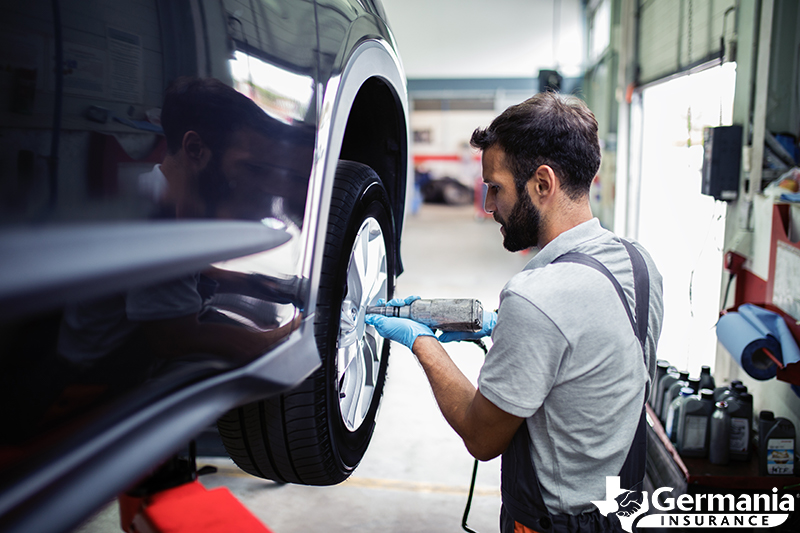Tire Maintenance 101: Essential Tips and Tricks
Tire maintenance is crucial for road safety and optimal performance. Regularly checking tire pressure, tread wear, and alignment is essential.
Tire maintenance plays a vital role in ensuring road safety and maximizing the performance of your vehicle. By regularly monitoring tire pressure, checking for tread wear, and ensuring proper alignment, you can avoid potential hazards and improve fuel efficiency. Neglecting these tire maintenance tasks can lead to increased risk of accidents, reduced handling capabilities, and decreased lifespan of the tires.
We will discuss the importance of tire maintenance and provide guidance on how to properly care for your tires for a smooth and safe driving experience.

Credit: www.justridela.com
Why Proper Tire Maintenance Is Crucial
Proper tire maintenance plays a critical role in ensuring the overall performance and safety of your vehicle. Regularly maintaining your tires is of utmost importance to avoid any potential issues. Neglected tire maintenance can have a significant impact on both performance and safety.
By neglecting maintenance, you risk compromising your vehicle’s handling, fuel efficiency, and overall performance, not to mention the potential safety hazards. Regular tire inspections, maintaining proper tire pressure, checking for tread wear, and rotating tires can help prevent costly repairs and ensure optimal performance.
Additionally, addressing any issues promptly can extend the lifespan of your tires, saving you money in the long run. Don’t overlook the importance of regular tire maintenance; it’s crucial for the safety and performance of your vehicle.
Signs Of Tire Wear And Tear
Recognizing signs of wear and tear on tires is crucial for proper tire maintenance. By understanding the different types of tire damage, you can detect potential issues early on. Look out for uneven wear patterns, which may indicate alignment or suspension problems.
Bulges or bubbles on the tire’s sidewall could be a sign of internal damage. Excessive cracking or dry rot can weaken the tires and compromise their performance. Tread wear indicators, those small rubber bars between the treads, become visible when the tire needs replacement.
Additionally, inspect for any foreign objects, such as nails or stones lodged in the tread. Regularly checking for these signs of wear and tear can help prolong the life of your tires and ensure your safety on the road.
Tire Pressure: Maintaining Optimal Levels
Maintaining optimal tire pressure is crucial for your vehicle’s performance and safety. Regularly checking and adjusting tire pressure ensures smooth handling, fuel efficiency, and extends tire lifespan. To check tire pressure correctly, use a reliable pressure gauge and refer to the recommended psi (pounds per square inch) for your vehicle, which can be found in the owner’s manual or on the driver’s side door jamb.
If the pressure is too low, add air until it reaches the recommended level; while if it’s too high, release some air. Incorrect tire pressure can lead to issues like uneven tread wear, decreased traction, and even tire blowouts. By keeping an eye on your tire pressure and making necessary adjustments, you can ensure a safe and comfortable driving experience.
Rotating Tires For Even Wear
Regular tire rotation is essential for maintaining even wear and prolonging the lifespan of your tires. By following recommended patterns and frequency, you can ensure that your tires wear evenly and last longer. This means less frequent replacement and cost savings for you in the long run.
Tire rotation involves moving each tire to a different position on your vehicle to distribute the wear more evenly. This helps to prevent one or two tires from wearing out more quickly than the others, resulting in decreased traction and safety concerns.
It is important to note that different vehicles may have different rotation patterns, so be sure to consult your vehicle’s manual or a trusted tire professional for guidance. Proper tire rotation is a simple but effective way to maintain optimal tire performance and safety.
Alignment And Balancing: Ensuring Proper Tire Performance
Proper tire alignment and balancing play a crucial role in maintaining tire performance and longevity. It involves adjusting the angles of the wheels and ensuring equal distribution of weight on all tires. Understanding the basics of tire alignment and balancing is essential.
Signs such as uneven tire wear, vehicle pulling to one side, or steering wheel vibrations indicate the need for alignment and balancing. These issues can arise due to various factors, including hitting potholes or curbs. While some may attempt to tackle alignment and balancing on their own, seeking professional assistance is highly recommended.
Professionals have the expertise, tools, and technology to accurately diagnose the problem and make necessary adjustments. Regular alignment and balancing not only enhance tire performance but also improve fuel efficiency and overall safety on the road. So, take care of your tires and ensure proper alignment and balancing for an optimal driving experience.
Tire Tread Depth: Measuring And Monitoring
Tire tread depth is crucial for both safety and performance. To accurately measure tread depth, there are recommended methods available. Regular monitoring is essential to ensure tires are not worn out and are in optimal condition. When tread depth becomes too shallow, it affects grip and increases the risk of accidents.
By replacing worn-out tires promptly, you can maintain the performance and safety of your vehicle. Always be mindful of tread depth and take appropriate action to avoid any negative consequences on the road. Proper tire maintenance is a crucial aspect of vehicle care for every driver.
Tips For Tire Storage
Proper tire storage is crucial for maintaining their condition over a long period. Before storing tires, there are important steps to follow. Firstly, ensure they are thoroughly cleaned to remove any debris or dirt. Next, inspect tires for any damages, such as punctures or bulges, and address the issues beforehand.
It is also essential to deflate the tires to the recommended pressure, reducing the risk of damage. Additionally, storing tires in a cool, dry place away from direct sunlight is recommended. As moisture can be harmful, consider using tire totes or wraps to protect them properly.
Lastly, avoid stacking tires or placing heavy objects on top of them, as this can cause deformation. By adhering to these practices, you can preserve the quality of your tires during long-term storage.
Tire Inspection: Spotting Potential Issues
Regular tire inspection practices are crucial for identifying potential problems. During these inspections, there are several common issues that you should be on the lookout for. These issues include tire tread wear, uneven wear patterns, cracks, bulges, punctures, and signs of damage on the sidewalls.
By closely examining the condition of your tires, you can spot any signs of wear or damage early on. This allows you to take necessary action, such as replacing or repairing the tire, before it leads to more serious issues, like blowouts or loss of traction.
It is important to conduct these inspections regularly and follow proper maintenance practices to ensure the longevity and performance of your tires. By being proactive and attentive, you can maintain the safety and efficiency of your vehicle’s tires.
Tire Maintenance Checklist: Essential Steps
Tires play a crucial role in ensuring vehicle safety and performance. To keep your tires in top condition, it’s important to follow a comprehensive tire maintenance checklist. Regularly inspect your tires for signs of wear and tear, such as uneven tread wear or bulges.
Keep an eye on tire pressure and ensure it meets the manufacturer’s recommended level. Rotate your tires regularly to maintain even wear and extend tire life. Check the alignment of your wheels to prevent uneven tire wear. Don’t forget to examine the depth of your tire tread and replace them when they become too worn.
By following these essential steps, you can ensure the longevity and performance of your tires.
Additional Tire Maintenance Tips And Tricks
Maintaining your tires is crucial for optimal performance and extending their lifespan. Regularly checking tire pressure and ensuring it is at the recommended level is essential. Rotate your tires regularly to promote even wear and prevent premature damage. Keep an eye out for any signs of wear and tear, such as cracks, bulges, or uneven tread wear, and replace the tires if necessary.
Avoid overloading your vehicle, as it can put excessive pressure on the tires. Additionally, drive cautiously and avoid sudden acceleration or braking to minimize wear. By following these tips and tricks, you can ensure that your tires last longer and provide a safer driving experience.
Proper tire maintenance is key to maximizing performance and keeping you safe on the road.
Conclusion
Proper tire maintenance is crucial to ensure your safety and extend the lifespan of your tires. By regularly inspecting for wear and tear, checking your tire pressure, and rotating them regularly, you can avoid potential accidents and costly repairs. Additionally, keeping your tires properly inflated and aligned will contribute to better fuel efficiency and a smoother ride.
Remember to also keep an eye on the tread depth and replace your tires when they become worn beyond the recommended limit. Don’t overlook the importance of tire maintenance. By taking a few simple steps, you can significantly prolong the life of your tires and save money in the long run.
Make it a habit to check your tires regularly and address any issues promptly. This will not only ensure your safety on the road, but also optimize your driving experience. So, take control of your tire care and enjoy a smoother, safer ride for miles to come.







